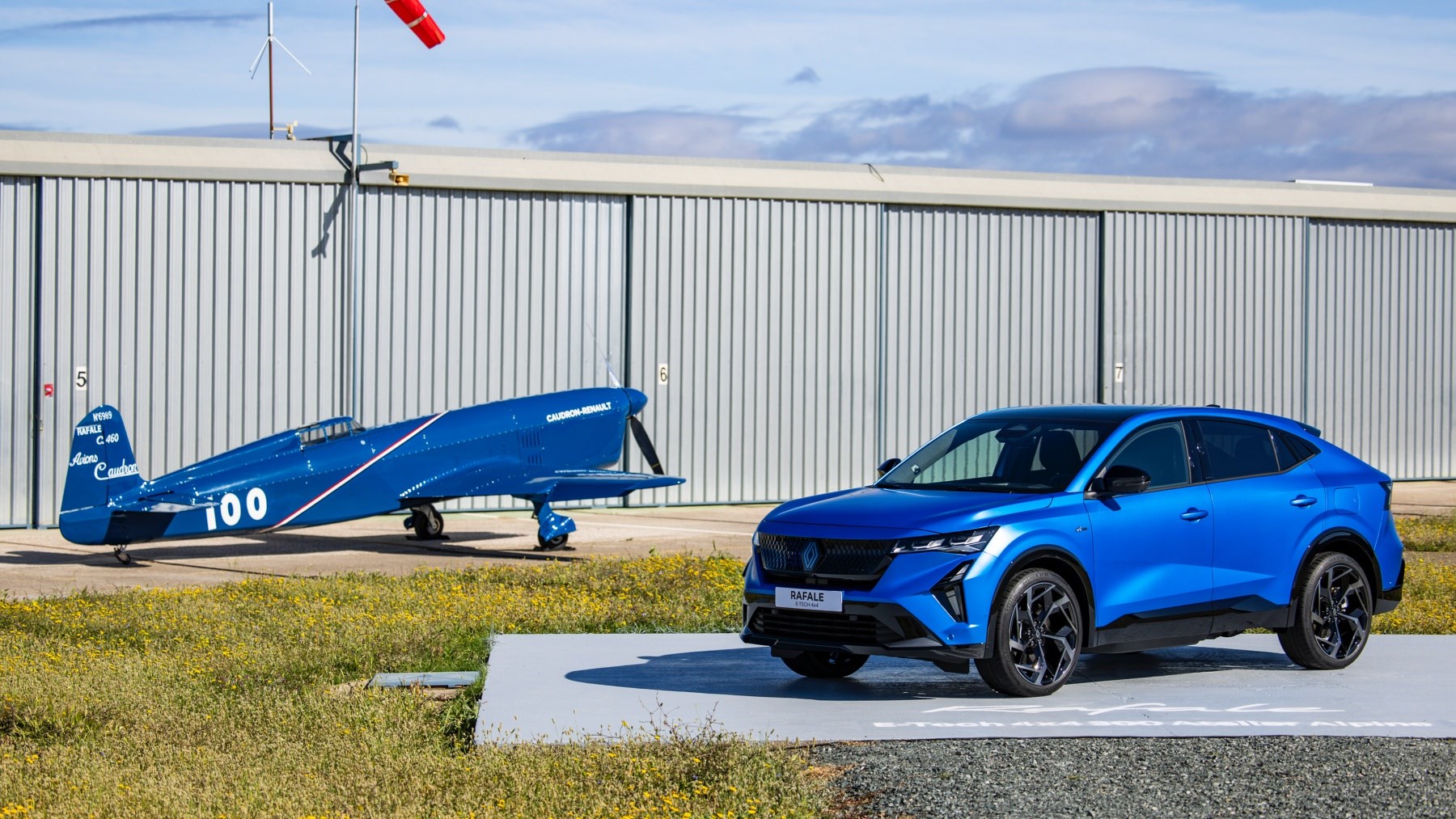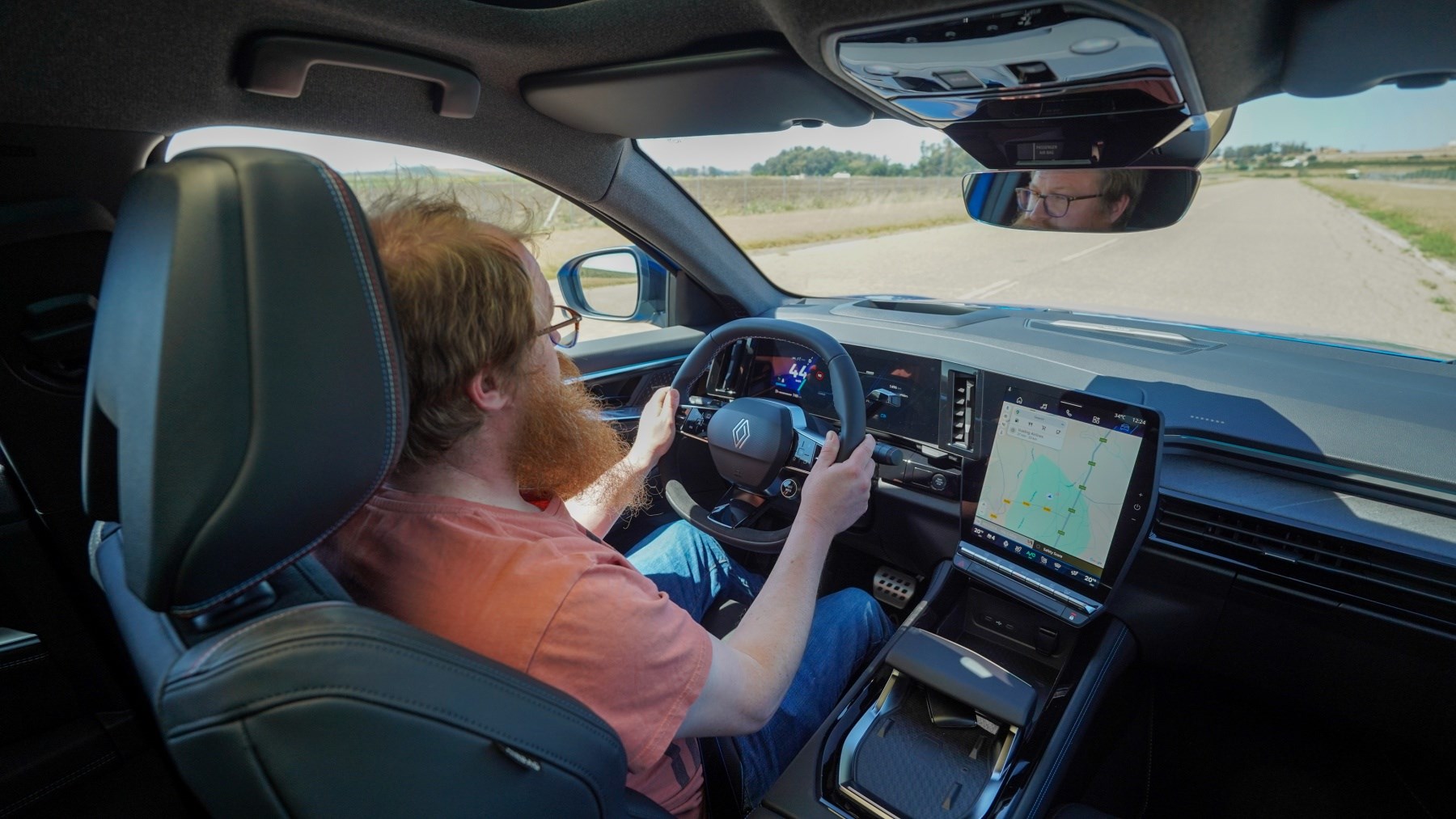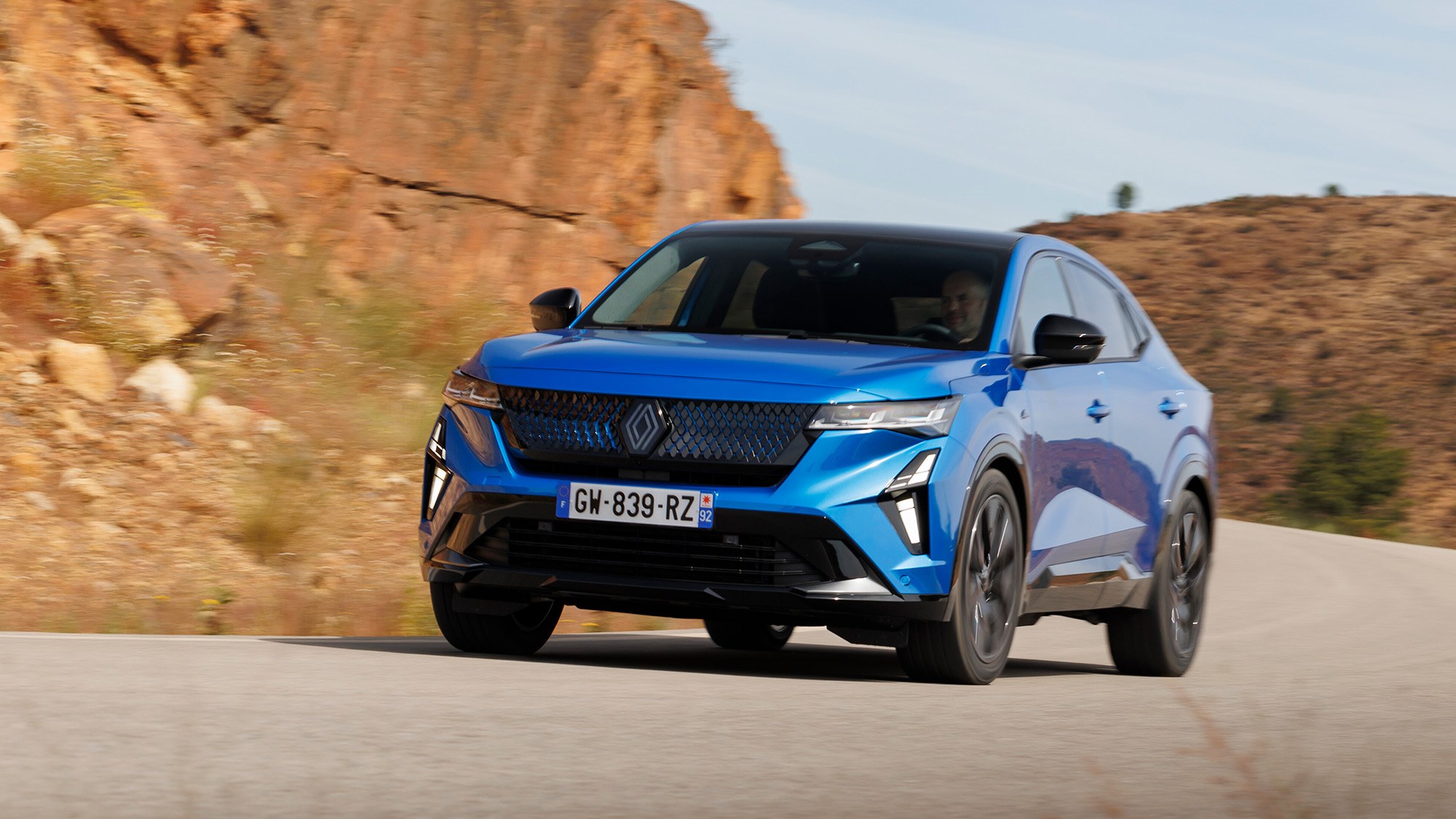► CAR drives Renault’s biggest UK bound SUV
► Full hybrid or four-wheel drive PHEV
► Four-wheel steer and adaptive suspension available
No, you’re not going mad. I have already driven a Renault Rafale in Europe, just not the one at the top of this page. Joining the 197bhp front-wheel drive full hybrid Rafale E-Tech sampled previously is the blue machine above, the E-Tech 4×4 300.
Power jumps to 296bhp thanks in part to an electric motor that drives the rear wheels, although the petrol engine gets a tickle as well. Crucially, it’ll do up to 65 miles of all-electric running, sticking it in a temptingly low company car tax bracket.
So, which is peak Rafale, and should you even be bothered by one in the first place? A few hours driving both puts me in a great position to tell you, and if you’re wondering how we test cars, have a look at our dedicated page.
At a glance
Pros: Spacious, well-equipped, PHEV’s impressive electric range
Cons: Stiff ride, not much fun
What’s new?
Mainly the plug-in hybrid bits. The Rafale name certainly isn’t new, with the Renault-Caudron Rafale plane from 1934 apparently served as some influence. Sadly the Rafale SUV doesn’t get a supercharged in-line six under the bonnet, instead sticking with Renault’s latest hybrid systems.

Underneath, the Rafale shares a platform with the Austral family SUV and not-for-the-UK Espace seven-seater. Regular E-Tech hybrid models are front-wheel drive, while the PHEV 4×4 gets another electric motor to power the back axle.
The interior should also be familiar to Austral owners, although this isn’t necessarily a bad thing. One properly new feature is a clever rear armrest that incorporates a pair of cupholders, two USB-C ports and a couple of device stands that work together or separately.
What are the specs?
The regular ‘self-charging’ Rafale E-Tech combines a 128bhp turbocharged 1.2-litre three-cylinder petrol engine with an electric motor integrated into the gearbox, and another working as an integrated starter/generator.

Together they produce 197bhp which is enough for a 0-62mph time of 8.9-seconds and 111mph flat out. More impressively (and importantly), they emit just 105g/km and get 60.1mpg on the official WLTP test cycle.
If you want more Va Va Voom, the PHEV gets its petrol lump tickled to 148bhp and has another 134bhp electric motor that exclusively powers the rear wheels. All power sources working together provide 296bhp and a 0-62mph time of 6.4 seconds. The all-electric range is a useful 65 miles (if you stick to entry-level trim), and the 22kWh pack takes just under three hours to charge on a typical home wallbox.
What’s it like to drive?
A bit odd, if we’re honest. The regular hybrid is very reminiscent of the Austral, unsurprisingly. While a bit grumbly on startup from cold, it’s a system that’s quiet and acceptably smooth most of the time, if a bit hesitant at others.

It’ll also fire at odd times, with a gentle brush of the throttle sometimes awakening the engine with a start, while other times you can plant your foot and wait some time before the ICE wakes up. It’s no doubt down to battery levels but does take some getting used to.
So too does the four-wheel steering system. You can ramp it up in 13 steps that increase the speed the rear wheels can turn in the opposite direction to the fronts, but it can feel nervous in the more agility-focused modes. This is especially noticeable in long, sweeping corners that can take two or three steering inputs to get around rather than one smooth motion.
It’s at its best at low speeds, with it shrinking the turning circle to a Clio-matching 10.4 meters. Get too sudden with your inputs and it starts to feel a bit like a wayward shopping trolley though, the rear snapping around as the tyres quickly assume their maximum five degrees of angle.

With little in the way of information coming up from the front tyres, even impressive roll control and grip can’t persuade you that this is the dynamic thing Renault claims. It’s not even like it’s particularly punchy, the 8.9-second 0-62mph time looking and feeling sluggish in this day and age.
Adaptive dampers are saved for the PHEV, leaving the regular hybrid Rafale as a rather stiff-legged travelling companion. Our test route on the roads surrounding Seville had plenty of crumbling asphalt, expansion joints and other nasties familiar to UK inhabitants. These highlighted plenty of fidget, thud and thump that can irritate if you’re more interested in mpg than mph.
What’s the Rafale E-Tech 300 4×4 like?
It’s certainly faster, although it doesn’t always feel as quick as you might expect. A typical 50-70 overtake is generally performed swiftly. Accelerate from a standstill and you’re aware of the electric motors doing the heavy lifting before the engine really comes on song at a far higher speed than I expected. Performance in electric mode is fine, if not nippy.

Adaptive suspension which reads the roads surface with a camera comes on range topping trim. In Comfort mode I’m still very aware of surface imperfections although potholes and bumps are rounded off better. It does make the Rafale rise and squat like a tired Uber over speed bumps, though.
Sport mode tightens up the body control significantly without bringing too much extra harshness. Here, the Rafale once again displays a surprisingly level cornering stance with a strong purchase on the road’s surface. The rear motor certainly boost traction and helps it fire out of corners with more pace. Just don’t expect anything other than neutrality or understeer under power.
Sadly, numb steering once again stops you really having a good time. The rear steer did feel smoother and more natural than before, whilst showing its advantages on hairpin bends and especially tight carparks.
What’s the interior like?
Much better than the driving experience, that’s for sure. Again, there’s plenty lifted from the Austral and the Espace we’re denied in the UK, including the portrait-oriented infotainment screen and row of physical controls for the heating.

There are plenty of plush plastics and fancy looking trims to lift the ambiance, while most harder materials keep out of the way. The digital displays look crisp and respond promptly, although some menus can take some getting used to, while others are best dealt with when you’re stationary.
Space impresses despite the coupe roofline, although that’ll partly be down to the Rafale’s 4.7m length. There’s certainly no shortage of room up front, and the rear’s good, too. Even with a panoramic roof fitted, there’s ample headroom for a six-footer and generous legroom, too.

There’s even a kid-friendly central armrest with two USB-C ports, a pair of cupholders, two device holders and two carpeted trays. I’m not saying it’ll stop arguments in the back, but it’ll certainly lessen them.
As for the boot, it’s an impressive sounding 647-litres, albeit if you include the underfloor storage that’s only there if you avoid a spare wheel. Stick to the area twixt boot floor and parcel shelf, and the capacity shrinks to a still useful 535-litres.
Before you buy
The Rafale range kicks off with the regular hybrid in three fancy trim levels: Techno, Techno Esprit Alpine and Iconic Esprit Alpine. PHEVs only come in Techno Esprit Alpine or atelier Alpine flavours.
If it’s got Alpine in the name, you get four-wheel steering, but only atelier Alpine gets the clever suspension.

The asking price may raise an eyebrow for some, although Renault are masters of finance. Look at the monthly figures and rates available, and the Rafale is a lot of SUV for less money than you might think.
Verdict
If you’re looking for a family SUV that’s properly fun in the bends, the Rafale is not for you, at least not this version. Yes, it grips well, and the four-wheel steering certainly boosts agility, yet overall this is an SUV that feels like it’s trying to be something it isn’t.
The hybrid system is best when driven gently, which combined with the iffy steering puts you off grabbing it by the scruff on a winding road. It’s a shame, as it makes a lot of sense as a family wagon if you ignore the fractious ride.
A low BIK rate makes the plug-in a tempting choice for company car users, although it’s worth pointing out that versions of the Tiguan eHybrid are in the next bracket down. Its certainly brisk, but no more fun than the normal hybrid Rafale.